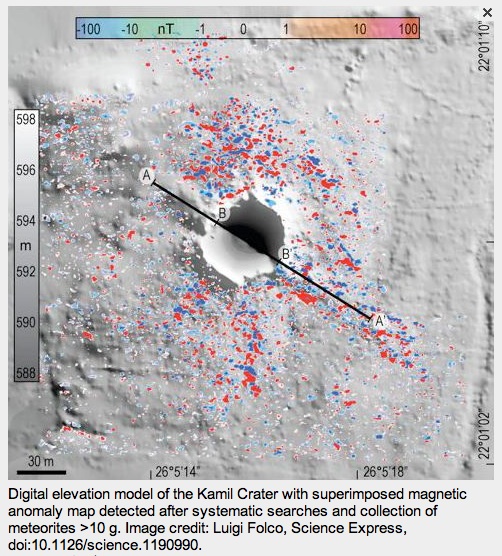 One of the most pristine crater sites in the world, Kamil teaches us to respect nature’s superiority over our lives.
One of the most pristine crater sites in the world, Kamil teaches us to respect nature’s superiority over our lives.
With its wealth of whale fossils trapped within what was once the Tethys sea, and the River Nile, now subdued but previously an angry god that rose and fell at will, affecting millions of people, Egypt offers an important reminder that we are subject to nature’s rules. When the rains don’t come, we struggle to grow food. When the rain comes in a fury, we lose our crops; we lose our homes. But when the next meteorite makes contact with the earth, we will be ready for it, thanks to one of the world’s best preserved craters recently discovered in the Sahara desert.
Pristine preservation
Of the 175 confirmed earth impact craters in the world, Kamil in southern Egypt may well be the best preserved, according to Clara Moskowitz, senior writer for SPACE.com. Usually craters on earth, compared to the moon or mars, for example, are subject to erosion and other environmental factors that either blow them away or fill them in.
The 148 foot wide Kamil crater, on the other hand, is so well sheltered that geophysicists tasked with verifying the crater in February 2010 could trace the stripes made by shattering debris. It was first discovered in 2008, via Google Earth.
“This crater is really a kind of beauty because it’s so well-preserved that it will tell us a lot about small-scale meteorite impacts on the Earth’s crust,” Luigi Folco, meteorite curator at the Museo Nazionale dell’Antartide in Siena, Italy, told Moskowitz.
When giant iron boulders crashes into the earth
Based on the crater’s size and shape, researchers calculated that it was probably “an iron meteorite about 4.3 feet (1.3 meters) in diameter traveling at 7,920 mph (11,732 kph),” writes Moskowitz, that slammed into the earth probably within the last few thousand years.
This impact event occurred “relatively recent[ly], in geological terms,” according to scientists, and could provide a lot of helpful information to prepare us for the possibility of a future event.
According to Folco, “small impacts are rather frequent on Earth — on the order of one event every 10 to 100 years,”… “studying this crater is a good opportunity for scientists to get to a correct assessment of the hazard small impacts pose to the Earth and to devise mitigation strategies.”
Browsing through google earth satelite images, Vincenzo de Michele, a former curator of the Civico Museo di Storia Naturale in Milan, Italy, first discovered the crater, while Folco published details from the verification trip in February in the 23 July issue of Science.
Objects crash through the earth’s atmosphere fairly regularly, according to SPACE, and though they usually burst in flames over the ocean, they are still a decent threat; it’s worth reminding ourselves that nature reigns supreme over everything we do.
:: image and via SPACE.com
More Travel and Nature News:
Environmentalists Say “No, No!” To Red-Dead Canal
Dust Swept Into Arabian Gulf Delivers Key Nutrients
Nature Iraq’s Conservation in A Combat Zone





Que legal. Nem sabia que o Egito tem isso também. Agora que eu vou viajar pra lá mesmo!
Pirâmide e cratera de meteorito, da hora.